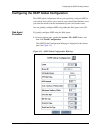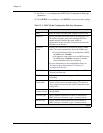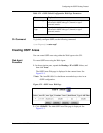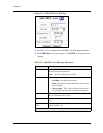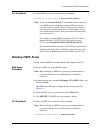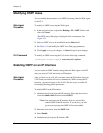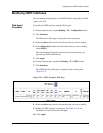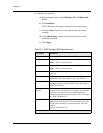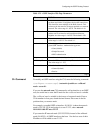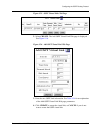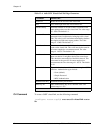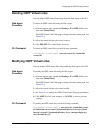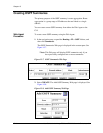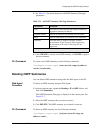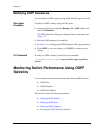
Document No. 10-300077, Issue 2 15-11
Configuring the OSPF Routing Protocol
CLI Command To modify an OSPF interface using the CLI, enter the following command:
(configure router:ospf)# network <ip-address> <wildcard-
mask> <area-id>
If you use the network area CLI command to add an interface to an OSPF
area, be careful not to enter the IP mask for the <wildcard-mask> variable.
The <wildcard-mask> variable is the inverse of a network mask. Enter a
32-bit number in four-part, dotted decimal format. Place ones in the bit
positions that you want to mask.
For example, to enable OSPF on interface 10.10.10.1 (where the network
mask is 255.255.255.0) and assign it to area 2.2.2.2, enter: network
10.10.10.1 0.0.0.255 area 2.2.2.2
If you enter the IP network mask (255.255.255.0) instead of the wildcard
mask (0.0.0.255), all OSPF interfaces that have 1 for the last octet of their
IP address will be added to area 2.2.2.2.
Dead Interval Enter the time (seconds) that a router’s Hello packets have
not been seen before it’s neighbors declare the router down.
This should be some multiple of the Hello interval. This
value must be the same for all routers attached to a common
network. The value range is 1-65535. The default is 40.
Poll Interval Enter the larger time interval (seconds) between the Hello
packets sent to an inactive non-broadcast multiaccess
neighbor. he value range is 1-65535. The default is 120.
Cost Enter the cost metric associated with this interface. The
value range is 1-65535. The default is 1.
Authentication Select the type of authentication available for use on a
given OSPF interface. Authentication types are:
• None (default)
• Simple Password
• MD5 Authentication
Key Enter the authorization key value for the interface.
MD5 Key ID Enter the MD5 authentication key ID as a decimal value.
The value range is 1- 255.
Interface State Select the interface state. The available sites are:
• Normal (default)
• Passive
Table 15-3. OSPF Interface Web Page Parameters
Parameter Definition
2 of 2



